p-nitrophenacyl bromide
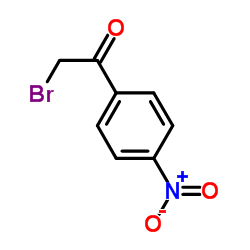
p-nitrophenacyl bromide structure
|
Common Name | p-nitrophenacyl bromide | ||
|---|---|---|---|---|
| CAS Number | 99-81-0 | Molecular Weight | 244.042 | |
| Density | 1.7±0.1 g/cm3 | Boiling Point | 325.2±17.0 °C at 760 mmHg | |
| Molecular Formula | C8H6BrNO3 | Melting Point | 94-99 °C(lit.) | |
| MSDS | Chinese USA | Flash Point | 150.5±20.9 °C | |
| Symbol |

GHS05 |
Signal Word | Danger | |
| Name | 2-Bromo-4'-nitroacetophenone |
|---|---|
| Synonym | More Synonyms |
| Density | 1.7±0.1 g/cm3 |
|---|---|
| Boiling Point | 325.2±17.0 °C at 760 mmHg |
| Melting Point | 94-99 °C(lit.) |
| Molecular Formula | C8H6BrNO3 |
| Molecular Weight | 244.042 |
| Flash Point | 150.5±20.9 °C |
| Exact Mass | 242.953094 |
| PSA | 62.89000 |
| LogP | 1.95 |
| Vapour Pressure | 0.0±0.7 mmHg at 25°C |
| Index of Refraction | 1.609 |
| Symbol |

GHS05 |
|---|---|
| Signal Word | Danger |
| Hazard Statements | H314 |
| Precautionary Statements | P280-P305 + P351 + P338-P310 |
| Personal Protective Equipment | Eyeshields;Faceshields;full-face particle respirator type N100 (US);Gloves;respirator cartridge type N100 (US);type P1 (EN143) respirator filter;type P3 (EN 143) respirator cartridges |
| Hazard Codes | C:Corrosive; |
| Risk Phrases | R34 |
| Safety Phrases | S26-S36/37/39-S45 |
| RIDADR | UN 3261 8/PG 2 |
| WGK Germany | 3 |
| Packaging Group | III |
| Hazard Class | 8 |
| HS Code | 2914700090 |
| Precursor 8 | |
|---|---|
| DownStream 10 | |
| HS Code | 2914700090 |
|---|---|
| Summary | HS: 2914700090 halogenated, sulphonated, nitrated or nitrosated derivatives of ketones and quinones, whether or not with other oxygen function Tax rebate rate:9.0% Supervision conditions:none VAT:17.0% MFN tariff:5.5% General tariff:30.0% |
|
QSAR study and conformational analysis of 4-arylthiazolylhydrazones derived from 1-indanones with anti-Trypanosoma cruzi activity.
Eur. J. Pharm. Sci. 78 , 190-7, (2015) A set of 4-arylthiazolylhydrazones derived from 1-indanones (TZHs) previously synthesized and assayed against Trypanosoma cruzi, the causative agent of Chagas disease, were explored in terms of confor... |
|
|
Active site of bee venom phospholipase A2: the role of histidine-34, aspartate-64 and tyrosine-87.
Biochemistry 35(14) , 4591-601, (1996) In bee venom phospholipase A2, histidine-34 probably functions as a Brønsted base to deprotonate the attacking water. Aspartate-64 and tyrosine-87 form a hydrogen bonding network with histidine-34. We... |
|
|
Chemical modification and inactivation of rat liver microsomal cytochrome P-450c by 2-bromo-4'-nitroacetophenone.
J. Biol. Chem. 261(25) , 11478-86, (1986) The alkylating agent 2-bromo-4'-nitroacetophenone (BrNAP) binds covalently to each of 10 isozymes of purified rat liver microsomal cytochrome P-450 (P-450a-P-450j) but substantially inhibits the catal... |
| p-Nitro-α-bromoacetophenone |
| Ethanone, 2-bromo-1- (4-nitrophenyl)- |
| EINECS 202-789-9 |
| 2-Bromo-1-(4-nitrophenyl)ethanone |
| α-Bromo-4-nitroacetophenone |
| Ethanone, 2-bromo-1-(4-nitrophenyl)- |
| p-nitrophenacyl bromide |
| 4'-Nitro-2-bromoacetophenone |
| α-Bromo-p-nitroacetophenone |
| 2-Bromo-4'-nitroacentophenone |
| Acetophenone, 2-bromo-4'-nitro- |
| 2-Bromo-1-(4-nitrophenyl)ethan-1-one |
| MFCD00007356 |
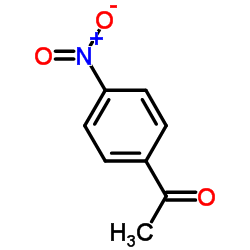 CAS#:100-19-6
CAS#:100-19-6 CAS#:940-13-6
CAS#:940-13-6 CAS#:100-12-9
CAS#:100-12-9 CAS#:67-56-1
CAS#:67-56-1 CAS#:100-13-0
CAS#:100-13-0 CAS#:59938-04-4
CAS#:59938-04-4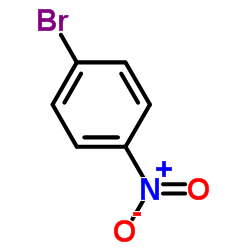 CAS#:586-78-7
CAS#:586-78-7 CAS#:838-57-3
CAS#:838-57-3 CAS#:108791-66-8
CAS#:108791-66-8 CAS#:104755-32-0
CAS#:104755-32-0 CAS#:110944-98-4
CAS#:110944-98-4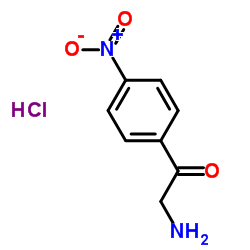 CAS#:5425-81-0
CAS#:5425-81-0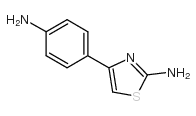 CAS#:3673-53-8
CAS#:3673-53-8 CAS#:33102-81-7
CAS#:33102-81-7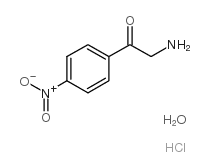 CAS#:4740-22-1
CAS#:4740-22-1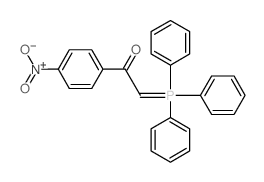 CAS#:1439-43-6
CAS#:1439-43-6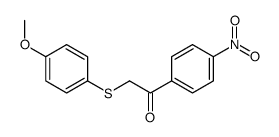 CAS#:142167-51-9
CAS#:142167-51-9
